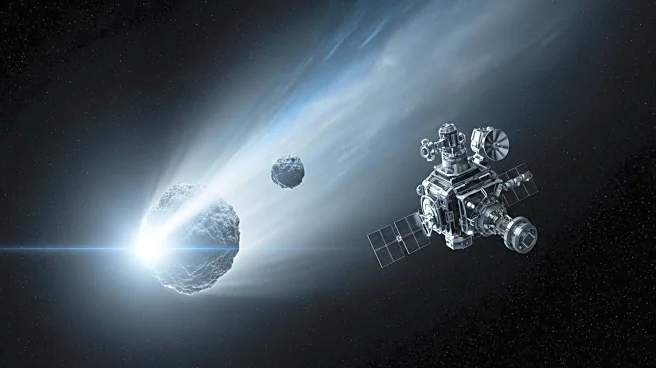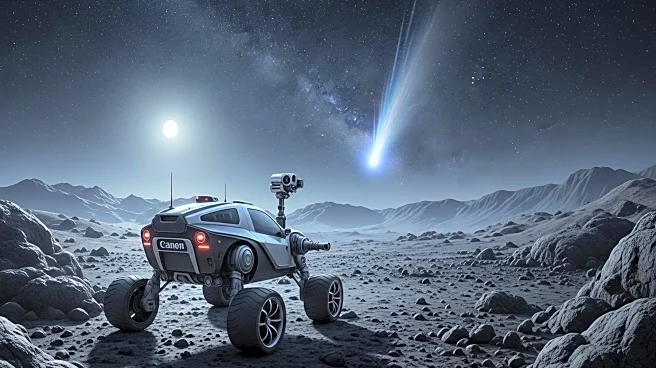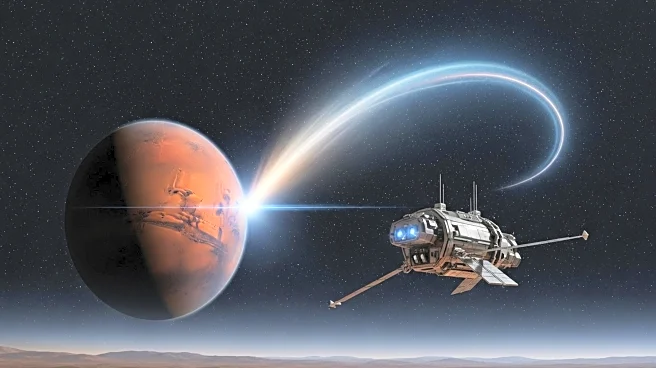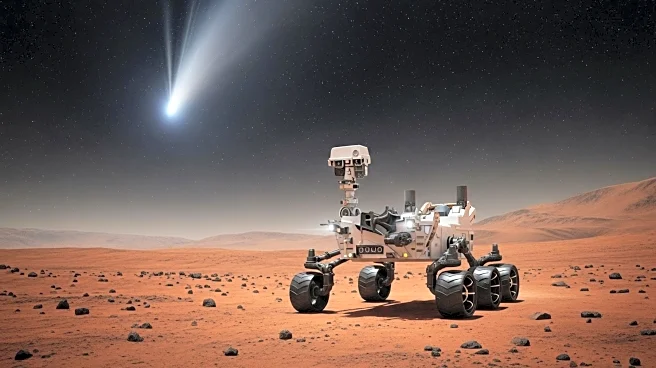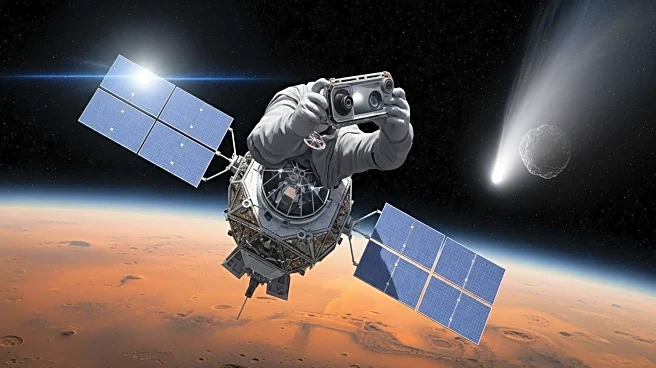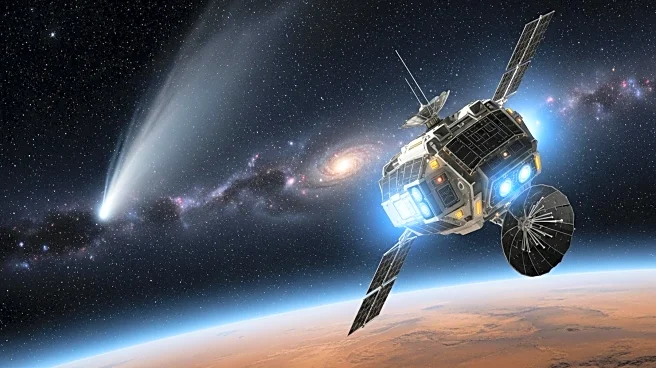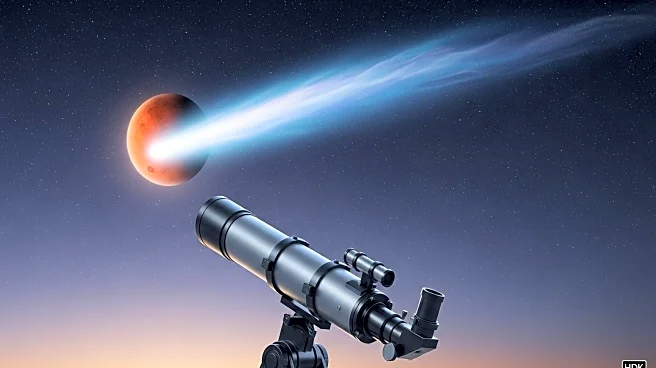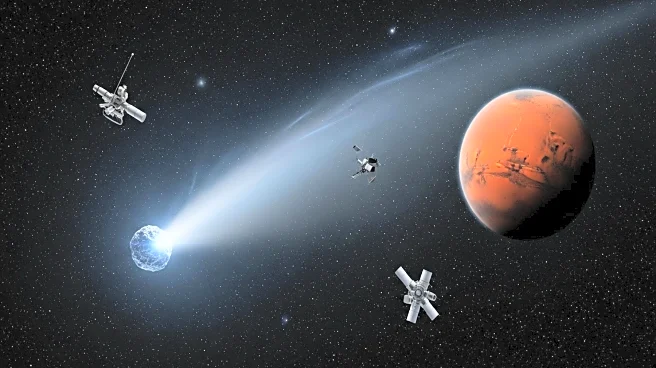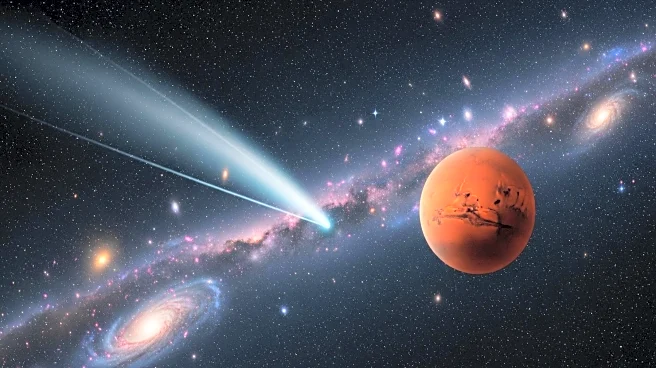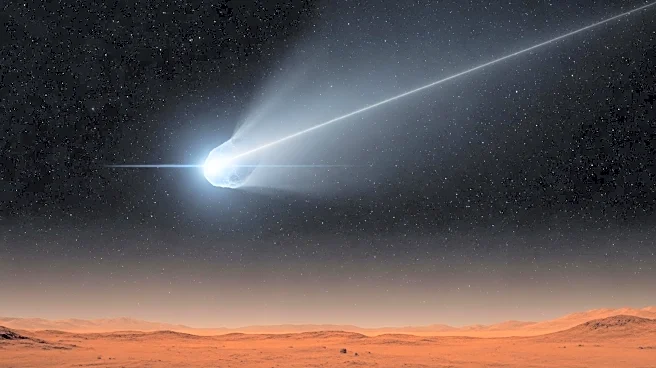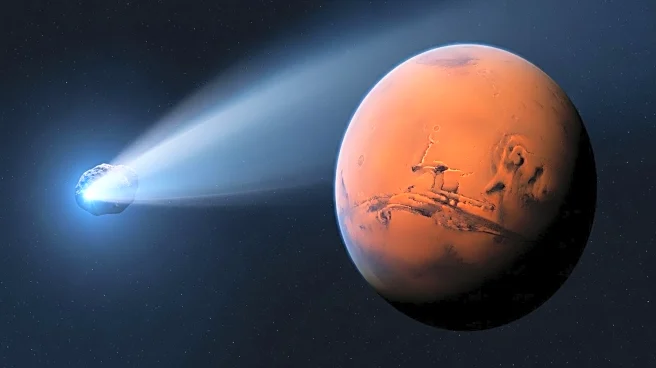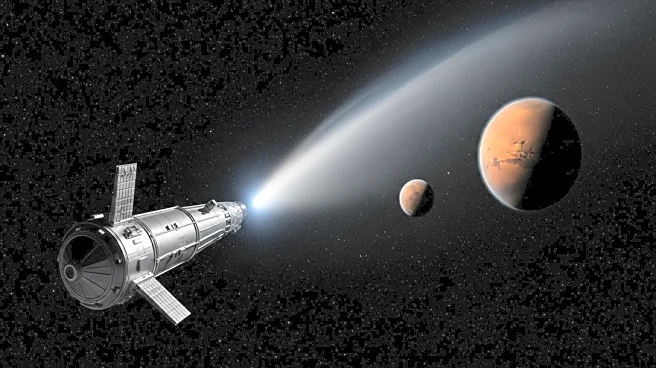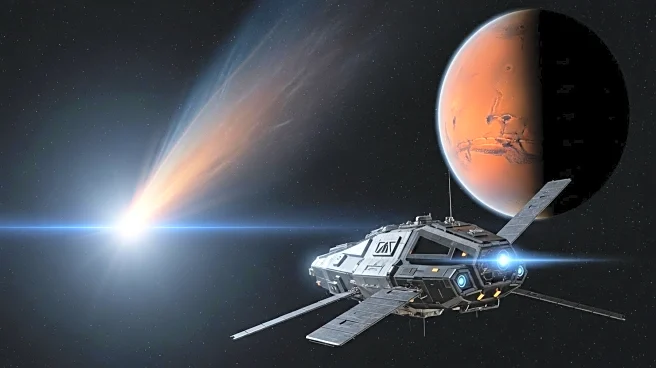What is the story about?
What's Happening?
The interstellar comet 3I/ATLAS, discovered in July, is gaining attention as it approaches the Sun. This comet is one of only three known objects originating from outside our solar system. Recently, two Mars orbiters, Mars Express and ExoMars Trace Gas Orbiter, captured images of 3I/ATLAS as it passed by Mars, approximately 18.6 million miles away. The comet, moving at a speed of 137,000 miles per hour, is expected to continue accelerating as it nears the Sun. Observations from various telescopes, including NASA's Hubble Space Telescope and the James Webb Space Telescope, have provided insights into the comet's size and composition. The comet's nucleus is estimated to be between 1,000 feet and 3.5 miles wide, surrounded by a coma of gas and dust.
Why It's Important?
The study of 3I/ATLAS is significant as it offers a rare opportunity to analyze material from outside our solar system. Unlike comets bound by the Sun's gravity, 3I/ATLAS is on a hyperbolic orbit, meaning it will eventually leave the solar system. This makes it crucial for astronomers to gather as much data as possible while the comet is still accessible. The observations could provide valuable information about the formation and characteristics of planetary material from other stars, enhancing our understanding of the universe. The comet poses no threat to Earth, but its unique trajectory and composition make it a subject of intense scientific interest.
What's Next?
Further observations of 3I/ATLAS are planned by the European Space Agency's Jupiter Icy Moons Explorer, known as 'Juice,' between November 2 and 25. The comet is expected to be in a very active state during this period, following its closest approach to the Sun. However, due to its position on the opposite side of the Sun, data from these observations may not be received until February. The comet will reappear in December, becoming visible from Earth once again, allowing for continued study by astronomers.
Beyond the Headlines
The discovery and study of interstellar objects like 3I/ATLAS challenge our understanding of the solar system and its boundaries. These objects provide a glimpse into the materials and processes occurring in other star systems, potentially offering clues about the origins of life and the formation of planets. The ethical and scientific implications of studying such objects are profound, as they expand our knowledge of the cosmos and our place within it.
AI Generated Content
Do you find this article useful?
